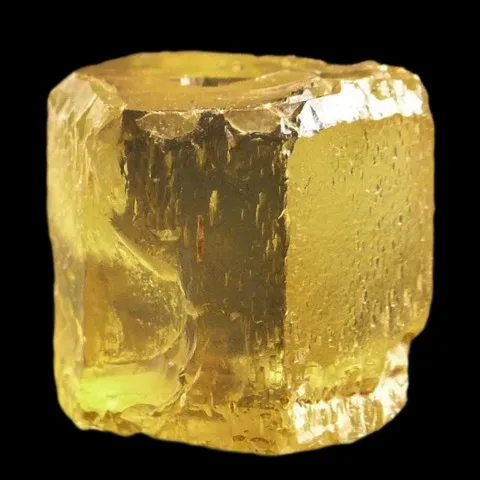HELIODOR
Class : Silicates
Subclass : Cyclosilicates
Crystal system : Hexagonal
Chemistry : Be3Al2Si6O18
Rarity : Common
Heliodor is a yellow variety of beryl, highly sought after as a gemstone. It is a typical variety of pegmatites and sometimes pneumatolytic veins. Its name comes from the Greek hêlios (sun) and dôron (gift), evoking its yellow color and its transparency. Like beryl, heliodor almost always occurs in elongated hexagonal prismatic crystals, vertically striated or grooved, sometimes short or flattened, rarely terminated. Its yellow color results from the presence of traces of iron in its crystal structure, replacing aluminum.
Main photo : Heliodor from Volodarsk-Volynskii, Ukraine © Oleg Lopatkin
Heliodor in the World
Twinning
No twins known for this mineral species.
Fakes and treatments
Heliodor can be obtained by irradiation and by heating aquamarine. The treatment is currently undetectable. Heliodor has been reported from several localities in the regions of Tajikistan, Afghanistan and Pakistan, it is most likely that all of these specimens are low quality aquamarines that have been irradiated to turn them golden yellow. No confirmed and verified evidence of the presence of heliodor on the ground in these areas has yet been released.
Right photo : Potentially irradiated heliodor from Zelatoya Vada Mine, Tajikistan
Hardness : 2.5
Density : -
Fracture : Undeterminated
Streak : Yellow
TP : Translucent to transparent
RI : 1.573 to 1.605
Birefringence : 0.032
Optical character : Uniaxial -
Pleochroism : None
Fluorescence : Yellow-green
Solubility : -
Magnetism : NoneRadioactivity : Strong






